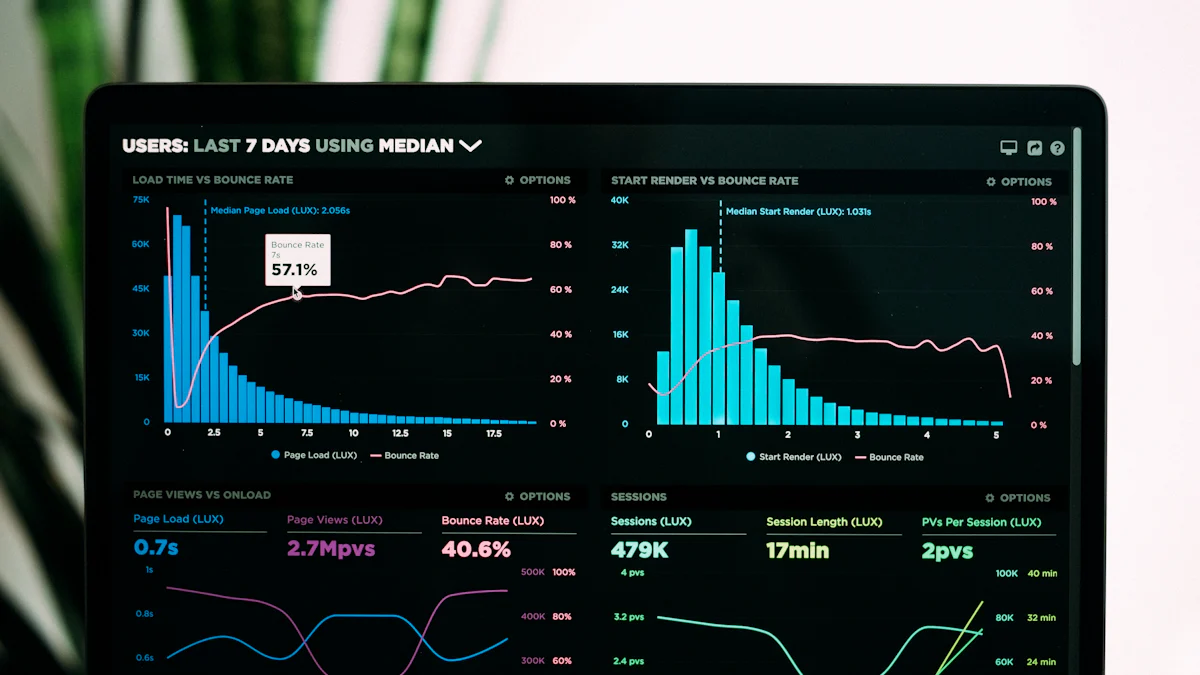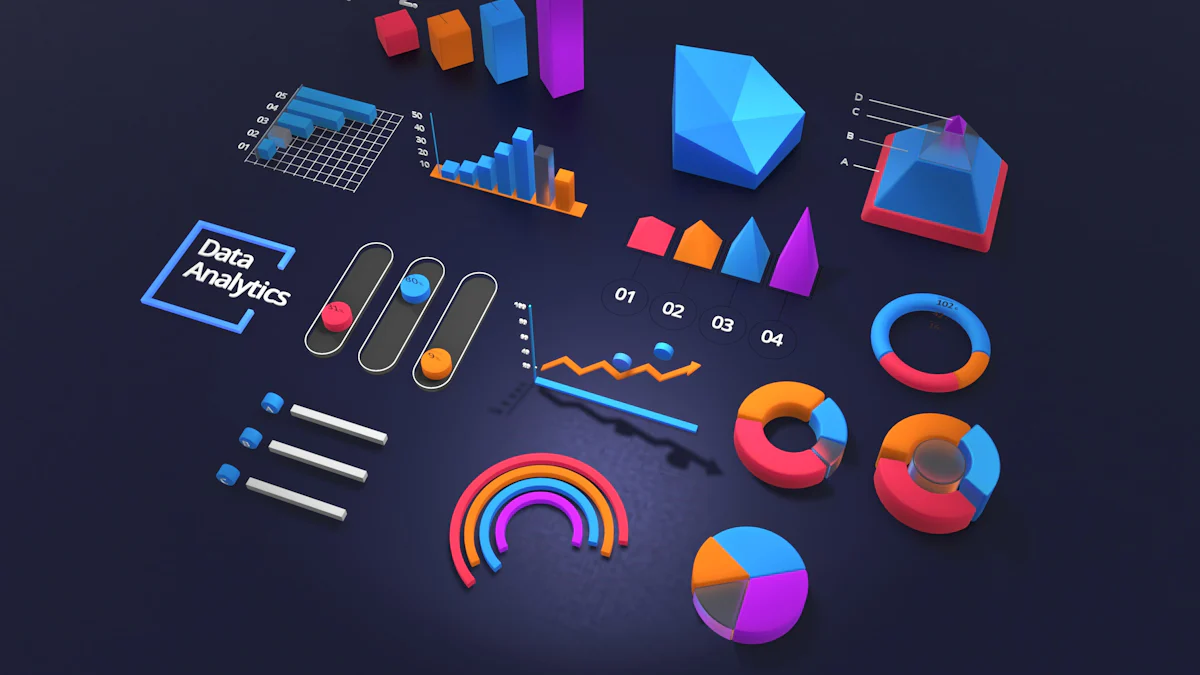How Real-Time Data Integration Transforms AI Decision-Making

Real-time data integration empowers you to make better decisions by ensuring AI systems work with the most current and accurate information. This approach eliminates outdated data errors and enhances the precision of analytics. For example, financial institutions use AI to detect fraud as it happens, protecting assets and building trust. In healthcare, AI-driven monitoring of patient vitals enables timely interventions, improving outcomes. By working with AI data feeds, you gain up-to-the-minute insights, allowing proactive responses to dynamic conditions and ensuring decisions are both relevant and reliable.
Key Takeaways
Real-time data integration ensures AI systems operate with the most current information, reducing outdated data errors and enhancing decision-making accuracy.
By leveraging AI data feeds, organizations can respond instantly to dynamic conditions, improving outcomes in critical sectors like healthcare and finance.
Implementing real-time data integration fosters better data governance and compliance, creating a scalable infrastructure that adapts to evolving business needs.
Industries such as retail and logistics benefit from real-time insights, enabling personalized customer experiences and optimized inventory management.
To successfully implement real-time data integration, consolidate data into centralized systems, ensure quality through cleansing, and start with pilot testing.
Understanding Real-Time Data Integration
What Is Real-Time Data Integration
Real-time data integration is the process of combining data from multiple sources and delivering it instantly to systems or applications. This ensures that you always work with the most current and accurate information. It enables seamless data flow, providing a unified view of your data assets. This approach improves data consistency and accuracy by validating and cleansing inputs. It also supports advanced analytics, allowing you to uncover meaningful insights and make informed decisions.
By adopting real-time data integration, you can establish better data governance and compliance. It creates an agile and scalable infrastructure that adapts to evolving needs. This not only enhances efficiency but also reduces costs by streamlining processes and eliminating redundancies.
How It Works
Collecting Data from Diverse Sources
Real-time data integration begins with gathering data from various sources, such as databases, IoT devices, and APIs. For example, AI data feeds from platforms like Uber or Google Maps provide live updates on driver locations or traffic conditions. These sources ensure that your systems receive accurate and timely information.
Continuous Processing and Integration
Once collected, the data undergoes continuous processing. This involves validating, transforming, and integrating it into a unified format. Techniques like Change Data Capture (CDC) help manage large data loads efficiently. This ensures that your systems can handle increasing demands without delays.
Technologies Powering Real-Time Data Integration
Streaming Platforms and APIs
Streaming platforms and APIs play a crucial role in real-time data integration. Examples include PubNub, which supports global real-time communication, and Twitter’s Streaming API, which provides live updates on user activities. These tools enable you to access and process data as it happens.
Middleware and Integration Tools
Middleware solutions, such as integration servers and message queuing systems, facilitate fast and reliable data exchange. They prioritize data based on urgency, ensuring critical information reaches its destination first. These tools form the backbone of real-time data integration, enabling smooth operations across systems.
The Role of AI Data Feeds in Decision-Making
Enhancing Data Accuracy and Relevance
AI data feeds improve the accuracy and relevance of decision-making by processing vast amounts of structured and unstructured data. These feeds allow AI systems to identify patterns, correlations, and anomalies that might go unnoticed by humans. For example:
AI algorithms analyze large datasets quickly, uncovering trends and providing valuable insights.
By identifying complex relationships in data, AI enhances the precision of predictions.
Faster data processing ensures decisions are based on the most current information.
This capability ensures that your decisions are not only timely but also grounded in reliable data. With AI data feeds, you can trust that your systems are working with the most accurate and relevant information available.
Enabling Real-Time Analysis and Predictions
Immediate Response to Dynamic Conditions
AI data feeds empower systems to respond instantly to changing conditions. For instance, computer vision technology can alert staff when customers light cigarettes near fuel pumps, enhancing safety in real time. Similarly, AI-powered screening programs have improved breast cancer detection rates while reducing false positives. These examples highlight how real-time analysis can save lives and improve outcomes.
Context-Aware Decision-Making
AI data feeds also enable context-aware decision-making by continuously analyzing live data. Deep learning models, for example, have outperformed traditional methods in predicting daily rainfall, showcasing the power of AI in understanding complex scenarios. Whether it’s monitoring wildlife populations or optimizing supply chains, AI data feeds ensure decisions are informed by the latest context.
Improving AI Adaptability
Learning from Live Data Streams
AI systems adapt better when they learn from live data streams. Continuous data integration keeps your AI updated with the latest insights, allowing it to respond to emerging trends. Traditional analytics often struggled with data latency, but real-time integration eliminates this issue, ensuring your decisions remain relevant.
Adjusting to New Patterns and Trends
AI data feeds help systems adjust to new patterns by working with the most current data. This adaptability supports timely decision-making and allows organizations to respond quickly to changing conditions. Without real-time integration, outdated data could hinder your ability to make effective decisions. By leveraging live data, you ensure your AI remains accurate and capable of handling evolving challenges.
Key Benefits of Real-Time Data Integration for AI

Improved Decision Accuracy
Eliminating Outdated Data Errors
Real-time data integration ensures your AI systems work with the most current information. By eliminating outdated data, you reduce the risk of errors that could negatively impact decisions. Real-time ETL (Extract, Transform, Load) processes play a critical role here, continuously updating your data pipelines. This approach ensures that your AI models rely on accurate and relevant data, leading to better outcomes.
Strengthening Predictive Analytics
With real-time data, your AI systems can make predictions that are both timely and precise. Metrics like accuracy, precision, and recall measure how well your AI performs. For example:
Metric | Description |
|---|---|
Accuracy | Overall correctness of the model's predictions. |
Precision | Ratio of true positive predictions to total positive predictions. |
Recall | Ratio of true positive predictions to actual positives. |
F1-score | Harmonic mean of precision and recall. |
ROC-AUC | Area under the receiver operating characteristic curve for classification tasks. |
RMSE | Root Mean Square Error for regression tasks. |
MAE | Mean Absolute Error for regression tasks. |
These metrics highlight how real-time data integration strengthens predictive analytics, ensuring your AI systems deliver actionable insights.
Faster Response Times
Real-Time Insights for Critical Decisions
Real-time data integration allows you to make critical decisions faster. For instance, in healthcare, AI-driven monitoring of patient vitals enables timely interventions. In finance, real-time fraud detection systems protect assets by identifying suspicious activities as they occur. These applications demonstrate how real-time insights can save lives and safeguard resources.
Gaining a Competitive Edge in Fast-Paced Industries
Industries like retail, finance, and manufacturing benefit significantly from faster response times. Real-time data integration supports applications such as personalized shopping experiences, fraud prevention, and predictive maintenance. By responding quickly to market changes, you gain a competitive edge and stay ahead in fast-paced environments.
Industry | Application of Real-Time Data Integration |
|---|---|
Healthcare | AI-driven real-time monitoring of patient vitals for timely interventions. |
Finance | Detecting and responding to fraudulent activities as they occur. |
Manufacturing | Optimizing production processes by predicting equipment failures. |
Enhanced System Adaptability
Continuous Optimization and Scalability
Real-time data integration enables your AI systems to adapt and scale effortlessly. Automated data mapping simplifies the integration of new data sources, while real-time processing ensures your systems stay updated. These capabilities allow you to optimize operations continuously and handle growing data volumes without compromising performance.
Handling Complex and Evolving Environments
AI systems thrive in dynamic environments when supported by real-time data. Intelligent data governance enforces policies automatically, ensuring compliance and adaptability. Contextual understanding further enhances operations by analyzing relationships within data. These factors make your AI systems more resilient and capable of managing complex challenges.
Factor | Description |
|---|---|
Automated Data Mapping | Facilitates the integration of new data seamlessly, enhancing adaptability. |
Real-time Processing | Provides up-to-date insights, supporting timely decision-making and overcoming traditional methods. |
Intelligent Data Governance | Automates enforcement of data policies, ensuring compliance and enhancing adaptability. |
Contextual Understanding | Analyzes relationships within data for accurate integration and interpretation, improving operations. |
By leveraging real-time data integration, you ensure your AI systems remain flexible and effective in evolving scenarios.
Real-World Applications of AI Data Feeds

Healthcare
Real-Time Patient Monitoring and Diagnostics
AI data feeds revolutionize healthcare by enabling real-time patient monitoring and diagnostics. Wearable devices like the Dexcom G6 CGM continuously track blood sugar levels and send updates to your smartphone. Systems such as Resideo LifeStream monitor blood pressure and alert physicians to abnormalities. Advanced tools like the IOL Master 500 and Pentacam provide precise eye measurements for surgeries, while Senseonics offers an implanted glucose sensor that connects to a mobile app for instant alerts. These technologies ensure timely interventions and improve patient outcomes.
Personalized Treatment Recommendations
AI-powered systems analyze patient data to recommend personalized treatments. By integrating real-time data, these systems consider your medical history, current condition, and even genetic information. This approach ensures that treatments are tailored to your unique needs, enhancing their effectiveness. For example, AI can suggest medication adjustments based on live monitoring of your vitals, ensuring optimal care.
Finance
Fraud Detection and Prevention
Real-time data integration strengthens fraud detection by analyzing transactions as they occur. AI systems identify suspicious activities instantly, reducing the risk of financial losses. Customizable risk scoring models prioritize high-risk transactions for review, while dynamic rules detect deviations from normal patterns. Continuous analysis of transactional data helps you stay ahead of emerging fraud trends. This proactive approach not only protects assets but also maintains customer trust by resolving issues swiftly.
Real-Time Trading and Risk Management
In trading, AI data feeds provide up-to-the-minute market insights, enabling you to make informed decisions. Real-time data integration helps assess risks and adjust strategies dynamically. For instance, AI systems analyze market fluctuations and recommend trades that align with your financial goals. This capability ensures you stay competitive in fast-moving markets.
Supply Chain and Logistics
Dynamic Inventory Management
Real-time data integration optimizes inventory management by providing continuous updates. Systems like Easy WMS allow precise tracking of item locations, ensuring you always know your stock levels. IoT technology, such as Wiliot’s IoT Pixels, eliminates manual scanning and enhances accuracy. These innovations improve operational efficiency and reduce costs.
Route Optimization and Delivery Tracking
AI data feeds enable route optimization by analyzing live traffic data. Companies use this information to reduce fuel consumption and improve delivery times. Real-time tracking systems monitor shipments at every stage, providing transparency for you and logistics providers. This approach ensures timely deliveries and enhances customer satisfaction.
Retail and E-commerce
Personalized Customer Experiences
Real-time data integration transforms how you interact with customers by creating highly personalized experiences. Retailers use location-based data to send push notifications when you are near a store. These notifications might include promotions or details about in-store events, making your shopping experience more engaging. If you browse a specific category on an e-commerce website, you may notice tailored product suggestions or exclusive offers related to your interests.
Loyalty programs and mobile apps further enhance personalization. When you shop in-store, staff can access your purchase history and recommend products that match your preferences. For example, if you frequently buy skincare products, a sales associate might suggest a new moisturizer that complements your routine. Retailers also analyze your browsing history and purchase patterns to refine recommendations. This ensures that the products you see are relevant and appealing.
Dynamic pricing strategies also benefit from real-time data. You might receive discounted rates as a loyal customer, while first-time shoppers could enjoy introductory prices. Retailers adjust prices based on local demand, seasonal trends, and competitor pricing, ensuring you always get competitive offers. These personalized interactions make your shopping experience seamless and enjoyable.
Real-Time Demand Forecasting
Real-time data integration helps retailers predict demand with remarkable accuracy. By analyzing live sales data, you can identify trends and adjust inventory levels accordingly. For instance, if a product suddenly gains popularity, systems can alert you to restock before it sells out. This minimizes lost sales and keeps customers satisfied.
Seasonal trends and regional preferences also play a role in forecasting. Retailers use real-time insights to prepare for peak shopping periods, such as holidays or back-to-school seasons. This ensures shelves remain stocked with the items you need. Additionally, integrating data from supply chains allows businesses to respond quickly to disruptions, ensuring smooth operations.
With real-time demand forecasting, you benefit from better product availability and a more efficient shopping experience. Retailers stay ahead of market changes, ensuring they meet your needs without delays.
Challenges and Solutions in Real-Time Data Integration
Ensuring Data Quality and Consistency
Maintaining data quality and consistency is critical for effective real-time data integration. Without reliable data, your AI systems risk producing flawed insights. To address this, you must focus on:
Sourcing data from dependable systems to reduce inconsistencies.
Implementing robust validation and cleansing processes to identify and fix errors in real time.
Resolving quality issues promptly to prevent incorrect decisions.
Combining data from diverse sources often leads to cross-system inconsistencies. For example, legacy systems may store outdated formats or incomplete records, complicating integration. Data transfer errors during migration can also result in loss or corruption. These challenges highlight the importance of stringent quality measures like deduplication and standardization. Poor data quality costs U.S. businesses $3.1 trillion annually, making proactive measures essential for success.
Addressing Latency and Performance Issues
Latency can hinder your ability to make timely decisions. To reduce delays, you should optimize data pipelines and processing logic. Proactive monitoring helps identify bottlenecks, while caching and in-memory processing enhance speed. For example, monitoring performance metrics allows you to react quickly to issues, ensuring seamless data flow.
High-performance infrastructure also plays a key role. By leveraging scalable systems, you can handle increasing data volumes without compromising speed. These strategies ensure your AI systems process data efficiently, enabling real-time responses to dynamic conditions.
Managing Integration Complexity
Integrating diverse data formats and systems can be overwhelming. Harmonizing these elements requires careful planning and the right tools. Standardized integration platforms simplify this process. For instance:
Integration Platform as a Service (iPaaS) offers pre-built connectors for flexibility and scalability.
API Management Platforms help create and manage APIs for secure data sharing.
Enterprise Service Bus (ESB) facilitates communication between applications, ideal for complex environments.
These platforms streamline integration, allowing you to focus on leveraging AI data feeds for actionable insights. By adopting standardized solutions, you can reduce complexity and improve operational efficiency.
Real-time data integration transforms how you make decisions with AI. It enables faster, more accurate, and context-aware outcomes, driving innovation and operational efficiency across industries. Businesses using real-time analytics report a 26% boost in efficiency, according to IDC.
Unlock the Power of Real-Time Data Integration for AI-Driven Decision-Making
TapData seamlessly integrates data from various sources into a centralized data warehouse, providing AI models with near real-time, up-to-date information for more accurate and timely decision-making. By enabling effortless materialized views with live updates, TapData enhances query performance and optimizes data access, empowering AI systems to make smarter, faster decisions.
Impact | Description |
|---|---|
Increased Accuracy | Real-time data integration leads to more accurate business decisions based on real-time data. |
Streamlined Processes | Eliminates data silos, enhancing speed and accuracy of reporting. |
Enhanced Responsiveness | Improves capacity to respond to market trends and operational issues. |
To implement this successfully, follow these steps:
Consolidate siloed data into centralized systems and ensure quality through cleansing and governance.
Choose storage solutions that support AI, like data lakes or hybrid clouds.
Begin with pilot testing and refine systems based on feedback.
By embracing real-time data integration, you unlock the full potential of AI and stay competitive in a rapidly evolving world.
FAQ
What is the main advantage of real-time data integration for AI systems?
Real-time data integration ensures your AI systems always work with the latest information. This eliminates outdated data errors and improves decision-making accuracy. It also enables faster responses to dynamic conditions, giving you a competitive edge in fast-paced environments.
How does real-time data integration improve predictive analytics?
Real-time data integration provides your AI with up-to-date inputs, enhancing the precision of predictions. It strengthens metrics like accuracy and recall by continuously updating data pipelines. This ensures your AI models deliver actionable insights based on the most current trends and patterns.
What industries benefit the most from real-time data integration?
Industries like healthcare, finance, retail, and logistics gain significant advantages. For example, healthcare uses it for patient monitoring, while finance relies on it for fraud detection. Retail benefits from personalized experiences, and logistics improves delivery tracking and route optimization.
What challenges might you face when implementing real-time data integration?
You may encounter issues like data quality inconsistencies, latency, and integration complexity. Resolving these requires robust validation processes, high-performance infrastructure, and standardized integration platforms. Addressing these challenges ensures smooth operations and reliable outcomes.
How can you start implementing real-time data integration?
Begin by consolidating your data into centralized systems. Use tools like data lakes or hybrid clouds to support AI. Pilot test your integration processes and refine them based on feedback. This step-by-step approach ensures a successful implementation.
See Also
Exploring Data Integration Strategies to Boost Business Success
Best Practices for Efficient AI Data Readiness
Utilizing TapData in Smart Factories for Instant Data Optimization
Best Data Integration Solutions of 2024 for Smooth Operations
Maximizing ClickHouse's Real-Time Data Capabilities with Tapdata

